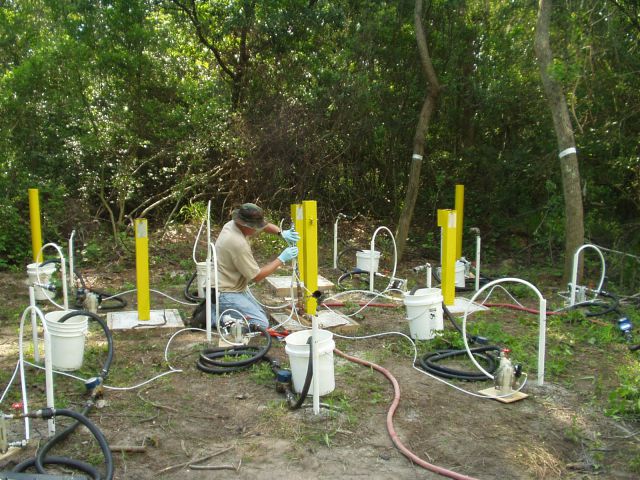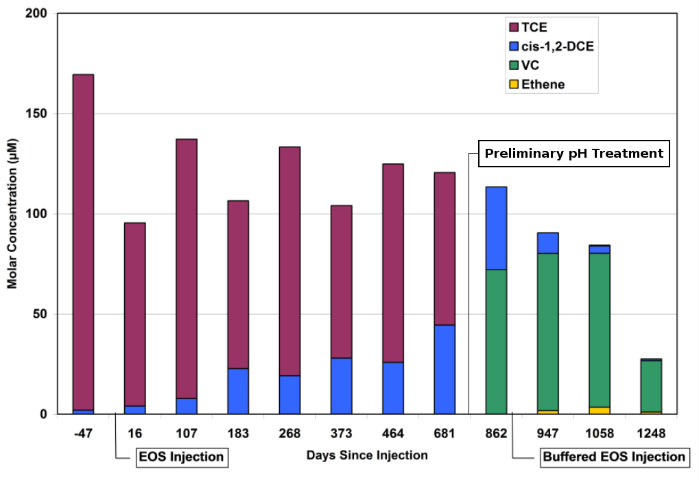Using CoBupH® to Adjust Aquifer pH

PROBLEM
A US Government site had elevated TCE. Low aquifer pH stalled in situ bioremediation.
PROJECT GOAL
• Inject organic substrate in the aquifer to enable naturally-occuring bacteria to effect in situ anaerobic reductive dechlorination
• Control pH to sustain long-term performance
• Achieve regulatory remediation levels of 5 µg/L TCE in groundwater and 53 µg/kg TCE in soil
• Control pH to sustain long-term performance
• Achieve regulatory remediation levels of 5 µg/L TCE in groundwater and 53 µg/kg TCE in soil
METHODOLOGY
Test effectivness of buffered emulsified oil substrate.
Phase I
• 16 wells paired to inject and recirculate EOS®PRO
• Post-injection performance monitoring for 29 months
Phase II
• 20 direct push points to inject CoBupH®
• Post-injection performance monitoring for 13 months
Phase I
• 16 wells paired to inject and recirculate EOS®PRO
• Post-injection performance monitoring for 29 months
Phase II
• 20 direct push points to inject CoBupH®
• Post-injection performance monitoring for 13 months

RESULTS
• Buffered substrate overcame the stall in bioremediation caused by low pH.
• Phase I unbuffered injections resulted in up to 99% TCE reduction, but with little formation of vinyl chloride (VC) or ethene.
• Phase II buffered injections stimulated the reductive dechlorination process resulting in substantial increases in both VC and ethene.
• Phase I unbuffered injections resulted in up to 99% TCE reduction, but with little formation of vinyl chloride (VC) or ethene.
• Phase II buffered injections stimulated the reductive dechlorination process resulting in substantial increases in both VC and ethene.
